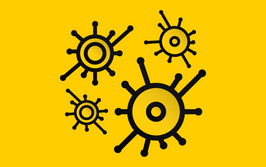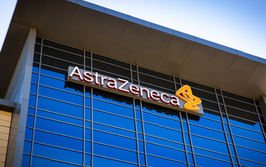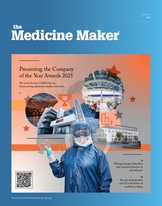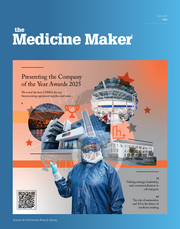
Perusing the Pipeline
With cell and gene therapies being all the rage, we take a peek at some of the advanced therapies coming down the pipe – from preclinical studies through to phase III trials.
Preclinical
Scientists have developed a gene therapy that prevents axon destruction in mice. When an axon is damaged, either through injury or by certain therapeutic drugs, a protein called SARM1 becomes active, which triggers axons to self-destruct. This destruction likely plays an important role in multiple neurodegenerative conditions, including peripheral neuropathy, Parkinson's disease and amyotrophic lateral sclerosis. The researchers used an AAV vector to introduce point mutations into human SARM1 and inhibit its function. They found axon preservation similar to that observed in SARM1 knockout mice (1).
An international team of researchers have used gene therapy to restore hearing in an adult mouse model of DFNB9 deafness – a hearing disorder that represents one of the most frequent cases of congenital genetic deafness in humans. Individuals with DFNB9 deafness are deficient in the gene coding for otoferlin, a protein essential for transmitting sound information at auditory sensory cell synapses. The researchers used a single intracochlear injection of two different recombinant AAV vectors to reconstruct the otoferlin coding region, leading to long-term restoration of otoferlin expression in the inner hair cells, and restored hearing (2).
Clinical Trials
Phase I/II
The first patient outside of China has been treated with a CRISPR/Cas9-based therapy. CRISPR Therapeutics and Vertex Pharmaceuticals’ gene edited hematopoietic stem cell therapy, CTX001, received Fast Track Designation by the FDA earlier this year. The treatment involves collecting a patient's hematopoietic stem cells from bone marrow and genetically modifying them so that they produce high levels of fetal hemoglobin, which can protect against sickle cell anemia and β-thalassemia (3). The companies are currently recruiting for a phase I/II clinical trial in patients with severe sickle cell disease (4).
Solid Biosciences are sponsoring a phase I/II trial to evaluate the safety, tolerability and efficacy of SGT-001, a gene therapy for Duchenne muscular dystrophy (DMD) (5). DMD is genetic disorder characterized by progressive muscle degeneration and weakness. It is caused by an absence of dystrophin, a protein that helps keep muscle cells intact. SGT-001 uses a recombinant AAV9 capsid to deliver a synthetic, shortened version of human dystrophin (mini-dystrophin).The aim is to support the production of a working protein similar to dystrophin (6).
UK-based biotech ReNeuron has announced encouraging results from an early stage trial of its cell therapy for the rare blindness-causing disease, retinitis pigmentosa (RP). The treatment involves the injection of human retinal progenitor cells (hRPCs) – stem cells that have partially developed into photoreceptors – underneath the patient’s retina. The aim is for those cells to integrate into the retina and fully develop into photoreceptors, replacing those lost to disease and, thereby, restoring vision. ReNeuron said all three subjects in the first cohort of the phase II part of the trial have demonstrated a significant improvement in vision at follow-up compared with their pretreatment baseline and compared with the untreated eye (7).
Phase II/III
Fujian Medical University, China, are recruiting for a Phase II/III clinical trial to test the efficacy and safety of their CD123/CLL1 CAR-T cell therapy for relapse/refractory B-cell acute myeloid leukemia (AML) (8). The interleukin-3 receptor α chain (CD123) is overexpressed in AML compared with normal hematopoietic stem cells; similarly, C-type lectin-like molecule-1 (CLL-1) is only expressed in myeloid cells and the majority of AML blasts, as well as in leukemia stem cells (LSCs), but not in hematopoietic stem cells (HSCs) – making both proteins potentially useful immunotherapeutic targets.
A pivotal phase III study is underway for AMT-061, an investigational gene therapy for people with severe and moderately severe hemophilia B. AMT-061 uses an AAV5 viral vector to deliver the gene for a mutated clotting factor IX (FIX) called the Padua variant (FIX-Padua). This leads to a significant increase in FIX activity, which is compromised in hemophilia B patients and results to deficient blood coagulation and an increased risk of bleeding or hemorrhaging. The phase IIb results found that a single administration of AMT-061 increased therapeutic levels of factor IX (FIX) in all patients enrolled in uniQure’s trial (9).
bluebird bio announced on February 21 that it plans on filing for European approval of Lenti-D in Cerebral adrenoleukodystrophy (CALD) in 2019 (10). CALD is a rare condition caused by a mutation in the adrenoleukodystrophy protein (ALDP), which normally breaks down very long chain fatty acids (VLCFAs). The resulting buildup destroys the protective myelin sheath around nerve cells, which means nerves can no longer relay information to and from the brain. CALD usually affects boys between four and 10, leading to permanent disability and death usually within four to eight years. Lenti-D involves transplanting a patient’s own CD34+ hematopoietic stem cells, modified to contain a functioning copy of the ABCD1 gene, which when mutated in CALD, results in production of nonfunctional (ALDP). bluebird bio currently has a phase II/III trial underway involving 30 patients (11) and a long term (15 year) follow up study (12).
- Washington University School of Medicine in St. Louis, “Gene therapy blocks peripheral nerve damage in mice” (2019). Available at: bit.ly/2SHkCME.
- EurekAlert, “Gene therapy durably reverses congenital deafness in mice” (2019). Available at: bit.ly/2Tts96d.
- Sickle Cell Anemia News, “CTX001” (2019). Available at: bit.ly/2XDNlFV.
- ClinicalTrials.gov, “A Safety and Efficacy Study Evaluating CTX001 in Subjects With Severe Sickle Cell Disease” (2019). Available at: bit.ly/2GXidfI.
- Pharmaphorum, “Cell therapy produces encouraging first results in eye trial” (2019). Available at: bit.ly/2tBklB5.
- ClinicalTrials.gov, “Microdystrophin Gene Transfer Study in Adolescents and Children With DMD (IGNITE DMD)” (2019). Available at: bit.ly/2IOe4MI.
- Muscular Dystrophy News Today, “Gene Therapy SGT-001 Shows Signs of Microdystrophin Production in Muscles of Boys in IGNITE DMD Trial” (2019). Available at: bit.ly/2Tx3xtm.
- ClinicalTrials.gov, “CD123/CLL1 CAR-T Cells for R/R AML” (2019). Available at: bit.ly/2EKN78G.
- ClinicalTrials.gov, “HOPE-B: Trial of AMT-061 in Severe or Moderately Severe Hemophilia B Patients” (2019). Available at: bit.ly/2NFUHEl.
- Hemophilia News Today, “Single Dose of Gene Therapy AMT-061 Proves Effective in Hemophilia B” (2019). Available at: bit.ly/2XCnG0s.
- ClinicalTrials.gov, “A Phase 2/3 Study of the Efficacy and Safety of Hematopoietic Stem Cells Transduced With Lenti-D Lentiviral Vector for the Treatment of Cerebral Adrenoleukodystrophy (CALD)” (2019). Available at: bit.ly/2tRCgne.
- ClinicalTrials.gov, “Long-term Follow-up of Subjects With Cerebral Adrenoleukodystrophy Who Were Treated With Lenti-D Drug Product” (2019). Available at: bit.ly/2VAmGIr.

Over the course of my Biomedical Sciences degree it dawned on me that my goal of becoming a scientist didn’t quite mesh with my lack of affinity for lab work. Thinking on my decision to pursue biology rather than English at age 15 – despite an aptitude for the latter – I realized that science writing was a way to combine what I loved with what I was good at.
From there I set out to gather as much freelancing experience as I could, spending 2 years developing scientific content for International Innovation, before completing an MSc in Science Communication. After gaining invaluable experience in supporting the communications efforts of CERN and IN-PART, I joined Texere – where I am focused on producing consistently engaging, cutting-edge and innovative content for our specialist audiences around the world.



















